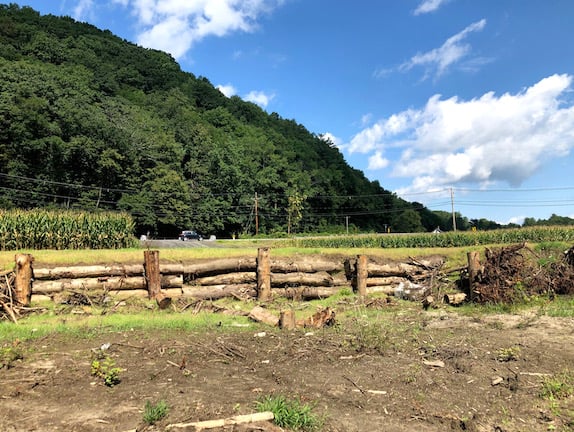
BELLOWS FALLS, Vt. – The Connecticut River Conservancy and the New Hampshire Association of Conservation Districts are currently overseeing work – from both sides of the Cold River – as part of a $500,000 conservation project that will not only reinforce its river banks, but also help slow down rapid river flow and provide habitat for birds and fish.
The work is part of a $10 million grant from the USDA’s Regional Conservation Partnership Program, awarded to promote conservation of the Long Island Sound watershed in six states throughout New England. The Connecticut River contributes over 70% of the freshwater to Long Island Sound.
The federal funding, other grants, and private donations were all matched dollar-for-dollar by CRC, and used to complete engineering designs, restoration plans, and the necessary permits needed to complete the project. They also secured other grant funds to help reduce possible landowner expenses. Overall, over $2.5 million was invested over a five-year period to complete the nearly 60 river restoration projects.
“We are very pleased to have been able to complete these many restoration projects in our local communities to improve the health of both the Connecticut River basin and Long island Sound,” CRC Executive Director Andrew Fisk said recently. “CRC will continue to work with landowners on restoration projects on their land that will improve our rivers and protect their investment in productive farm and forest land.”
Although the projects are not intended to prevent flooding, they are designed to protect land near the river from eventually being washed away during weather causing high water levels.
The expensive and time-consuming process includes the driving of pilings (large foundational posts) some 15 feet into the riverbanks, the planting of trees and shrubs, and the realigning of uprooted trees. This will help to slow runoff, filter pollutants from water before it enters the river, and decrease erosion and help stabilize the riverbanks.
Land on both sides of the Cold River is considered to be some of the most fertile in the country and does not require any fertilizer. The cropland is very valuable and is utilized at Cold River to grow corn for a nearby dairy herd and for vegetables that are sold at a local farm stand.
The Cold River project is one of some 60 projects in the works, covering about 200 miles of riverbanks in Vermont, New Hampshire, and Massachusetts. The goal is to help prolong and prevent erosion and stop excess nitrogen, which creates lower oxygen levels that can threaten fish and other wildlife. Excess nitrogen is caused when large chunks of the riverbanks are washed away due to high water levels.
With the new pilings in place, the force of the high-level waters will be hitting the wood and root balls – masses that form around tree roots – creating much less of an impact directly on the riverbanks. It will also make the rushing water dissipate and flow downstream better.